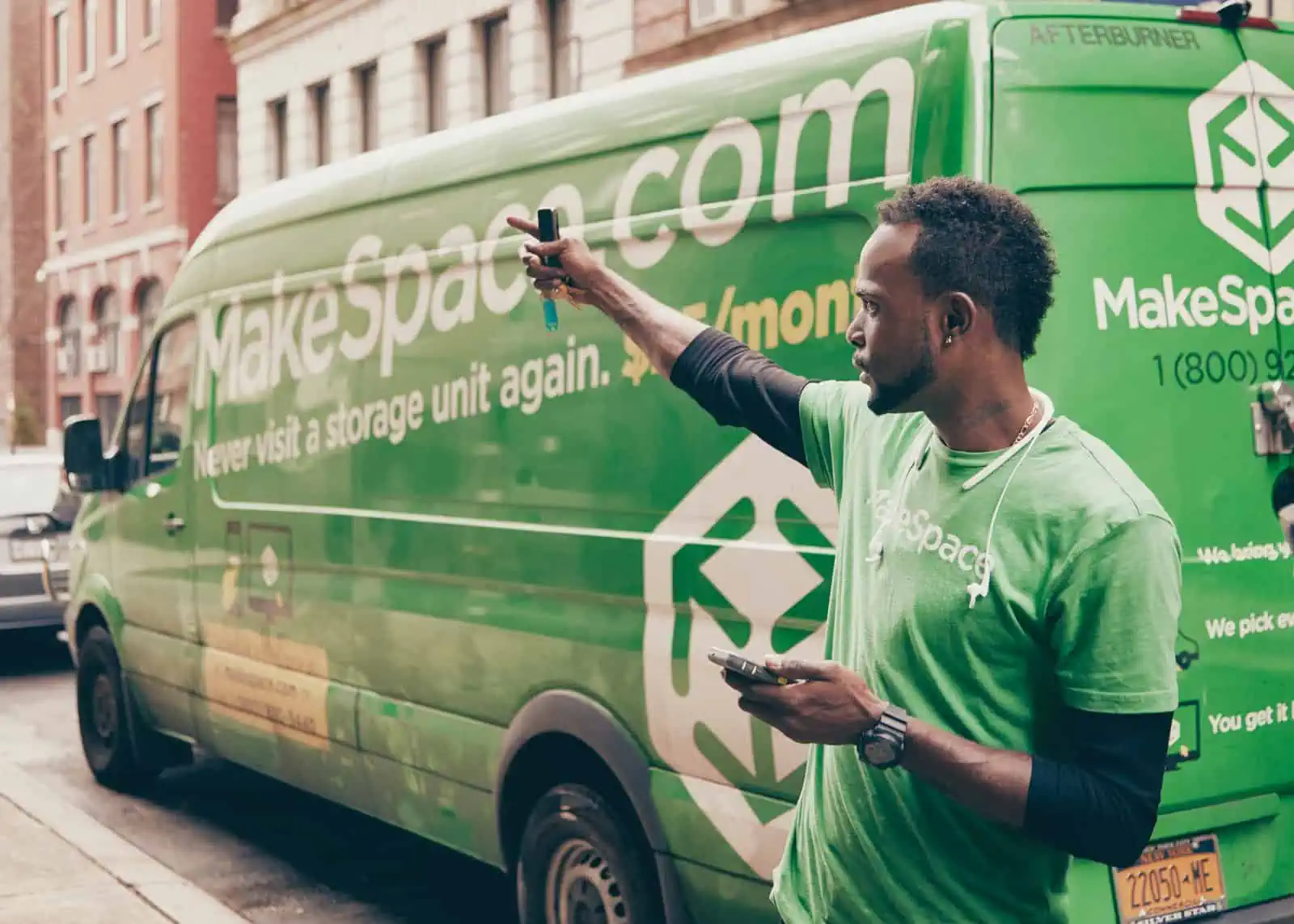As relationship milestones start to take shape, it’s time to discuss one of the biggest steps of all: moving in with a romantic partner.
If you’re considering moving in together, my assumption is that you’re already bringing all the love, excitement, and ooey-gooey feelings to the situation — which means that it’s my job to bring the practicality, organization, and the cold hard sense. (Spoiler alert: in my experience, all that good stuff comes flowing back in once you’ve set up a solid foundation.)
Here’s a list of some of the un-fun, straight-up, business-like details that have made living with a partner so much better for me.
Deciding on living arrangements
If one of you lives in a two-bedroom alone while the other lives in a lofty attic garret, this is probably a no-brainer. But in my experience, few situations are that simple.
My initial thought was that I wanted to start somewhere new with my boyfriend; I wanted to live somewhere neither of us had a history. Realistically, this was going to create more issues than it solved. For one, my boyfriend had just moved into his roomy one-bedroom a year before, at which point he’d paid a hefty broker’s fee. (This is a cute thing that used to be legal in New York City and was the bane of our collective existence.)
When weighing your options for living arrangements, consider not just the physical space but also how it fits into your lives together. For instance, think about the neighborhood vibe—is it a place where you can envision hosting friends for game nights or where your neighbors might call the cops on you for too much laughter? Also, consider the commute to work or other daily activities; nobody wants to spend an hour in traffic when they could be enjoying breakfast instead. Ultimately, finding a balance between comfort and practicality can make all the difference in your shared living experience.
Tips for choosing the right living arrangement
- Evaluate your needs: Before making any decisions, discuss what you both need in a living space. Do you need an office for remote work or a guest room for visitors?
- Budget wisely: Set a budget that includes rent and additional costs like utilities and groceries. Remember, living together shouldn’t mean living in debt.
- Visit multiple places: Don’t settle for the first place you see. Tour several options to get a feel for what works best for both of you.
- Consider commute times: Factor in how far each potential place is from work and other important locations. A short commute can save you both time and sanity.
- Think about future needs: Will this space accommodate any future changes? If you plan on growing your family (or your collection of houseplants), ensure there’s room to grow.
- Discuss shared responsibilities: Talk about how chores will be divided before moving in together. No one wants to be stuck doing all the dishes while their partner binge-watches another series.
- Trust your gut: If something feels off about a place or situation, don’t ignore that feeling. Your instincts are often right.
Negotiating living arrangements is like trying to find the perfect avocado—sometimes it’s ripe and ready, and other times it’s just not meant to be. So take your time, communicate openly with each other, and enjoy the process of finding your new home together.
Financial considerations
When it comes to living together, finances can be the elephant in the room—one that’s sitting on your wallet and munching on your budget. Before you dive headfirst into a new living arrangement, it’s vital to have an open and honest discussion about your financial situation. For example, my boyfriend and I sat down one evening with a bottle of wine (because adulting is hard), and we laid everything out on the table. We talked about our incomes, debts, and how much we could realistically afford for rent without sacrificing our daily lattes or weekend takeout orders.
Tips for navigating financial considerations
- Create a joint budget: Sit down together and outline all your income sources and expenses. This will help you see where you stand financially as a couple.
- Discuss debts openly: Be transparent about any student loans, credit card debt, or other financial obligations. Knowing each other’s financial baggage can prevent surprises later.
- Emergency fund: Set aside some savings for unexpected expenses like repairs or medical bills. Think of it as your financial safety net—because life loves throwing curveballs.
- Consider rent-to-income ratios: Aim to keep your combined rent under 30% of your total income. It’s a good rule of thumb that helps maintain financial stability.
- Review your credit scores: Knowing each other’s credit scores can help when applying for rental agreements. Plus, it’s a great excuse to bond over those cringe-worthy teenage credit mistakes.
Pre-move planning
Ah, pre-move planning—the stage where excitement meets chaos like a toddler in a candy store. Before you start packing boxes and dreaming of how you’ll arrange your furniture, take a moment to strategize. My boyfriend and I made the rookie mistake of waiting until the last minute to plan our move, which resulted in us frantically shoving clothes into suitcases while trying to remember where we put the cat (spoiler alert: she was hiding under the bed).
Tips for effective pre-move planning
- Create a moving timeline: Break down tasks into manageable steps with deadlines. This will help keep you organized and reduce last-minute panic.
- Declutter together: Go through your belongings as a team. Donate or sell items you no longer need. Trust me, you don’t want to move that old treadmill that doubles as a coat rack.
- Label boxes: Clearly label each box with its contents and the room it belongs to. This will save you from playing “Where’s Waldo?” with your kitchen utensils.
- Schedule utility transfers: Remember to set up or transfer utilities like electricity, water, and internet before moving day. Nothing says “welcome home” like sitting in the dark.
- Plan for pets: If you have pets, make sure they’re included in the moving plan. Create a cozy spot for them to relax while you handle the chaos—after all, they deserve a break, too.
Rent splitting strategies
Now that you’ve tackled finances and pre-move planning, it’s time to address how you’ll split rent without turning into a bickering couple from a sitcom. My boyfriend and I initially decided to split rent 50/50 because it seemed fair—until we realized I had more shoes than he had socks (and trust me, that’s saying something). So we had to come up with a strategy that worked for both of us.
Tips for fair rent splitting
- Proportional split based on income: If one person earns significantly more than the other, consider splitting rent based on income percentages rather than equally.
- Include shared expenses: Don’t forget to account for shared expenses like utilities, groceries, and household supplies when calculating how much each person should contribute.
- Revisit regularly: Set a schedule (like every six months) to revisit your rent-splitting agreement. Life changes quickly—someone might get a raise or decide they need more closet space.
- Use apps for tracking expenses: Consider using apps like Splitwise or Venmo to easily keep track of shared expenses. That way, you can skip the math headaches and focus on more important things, like deciding who gets the last slice of pizza.
Managing expectations
When you’re moving in together, it’s important to manage your expectations—because, let’s be honest, the reality of living together can sometimes feel like a reality show gone wrong. My boyfriend and I had high hopes of seamlessly blending our lives together, but we quickly learned that living with someone means discovering quirks and habits that might drive you up the wall. For instance, I had to come to terms with his love for leaving dirty socks in the living room while he had to adjust to my obsession with organizing everything by color.
Tips for managing expectations
- Communicate openly: Before moving in, have candid conversations about what you both expect from each other in terms of chores, personal space, and shared responsibilities.
- Set boundaries: Establish personal boundaries to ensure both partners feel comfortable. Maybe one of you needs quiet time after work—don’t be afraid to voice that.
- Be realistic about change: Understand that some habits may take time to change. Be patient with each other as you adjust to living together.
- Make room for compromise: You won’t always agree on everything (like the thermostat setting), so be prepared to find middle ground.
- Check-in regularly: Schedule regular check-ins to discuss how things are going. It’s a great way to address any issues before they snowball.
Moving day organization
The day when excitement meets chaos. To avoid turning your big move into a high-stakes treasure hunt, organization is key. On our moving day, my boyfriend and I thought we could just wing it. Joke was on us as we ended up with boxes everywhere and a cat who was thoroughly unimpressed with our life choices.
Tips for moving day organization
- Create a moving day checklist: Outline tasks for the day, including who’s responsible for what. This will help keep everyone on track and reduce confusion.
- Pack an essentials box: Set aside a box with all your essentials—think toiletries, snacks, and chargers. You’ll thank yourself later when you don’t have to dig through ten boxes for your toothbrush.
- Enlist help: Don’t be shy about asking friends or family for help. Bribing them with pizza and drinks can turn moving day into a fun gathering rather than a chore.
- Label boxes clearly: Use large labels on each box indicating its contents and which room it belongs in. This will save you from playing “guess what’s in this box” later.
- Take breaks: Moving is exhausting! Schedule short breaks throughout the day to recharge and avoid burnout.
Settling in together
Once the dust has settled (and you’ve finally located your favorite mug), it’s time to settle into your new life together. This stage is all about creating a cozy home that reflects both of your personalities. My boyfriend and I spent our first week rearranging furniture and debating over wall art—who knew choosing between abstract art or vintage posters could spark such passionate discussions?
- Personalize your space: Combine your styles by incorporating items that represent both of you. Hang photos from trips or display souvenirs that tell your story as a couple.
- Establish routines: Create daily or weekly routines that work for both of you—whether it’s cooking dinner together or having movie nights on Fridays.
- Explore your neighborhood: Take time to discover local spots like coffee shops, parks, or restaurants together. It’s a fun way to bond and make new memories.
- Designate shared spaces: Decide which areas are communal (like the living room) and which are private (like your respective office spaces). This helps maintain personal space.
- Be patient: Adjusting takes time! Don’t rush the process; enjoy getting to know each other in this new setting.
Building memories after moving in
Now that you’re all settled in, it’s time to focus on building memories together. My boyfriend and I made it a point to have regular date nights at home, trying out new recipes or binge-watching shows we’d never seen before. We even started a tradition of Sunday brunches where we’d whip up something delicious while sipping mimosas—because who says you can’t have fun while being responsible adults?
- Start new traditions: Create fun rituals that are unique to your relationship, whether it’s Taco Tuesdays or monthly game nights.
- Document your journey: Take photos of special moments—like your first dinner in the new place or silly selfies while cooking. It’ll be fun to look back on these memories later.
- Plan weekend getaways: Explore nearby towns or attractions together. A little adventure can inject excitement into your routine.
- Volunteer together: Find local charities or community events where you can volunteer as a couple. It’s rewarding and strengthens your bond.
- Celebrate milestones: Acknowledge anniversaries or achievements with small celebrations—whether it’s ordering takeout from your favorite restaurant or having a mini dance party at home.
Navigating Conflict Together
Let’s face it: no matter how perfect your relationship may seem, conflicts are as inevitable as running out of coffee on a Monday morning. Learning how to navigate disagreements is necessary for maintaining harmony in your new living situation. My boyfriend and I quickly discovered that our differing opinions on everything from the thermostat setting to how often we should do laundry could lead to some heated discussions. But instead of letting these moments drive a wedge between us, we learned to approach conflict with humor and understanding.
- Stay calm: When disagreements arise, take a deep breath and approach the situation with a level head. Yelling rarely leads to resolution—unless you’re yelling about pizza toppings.
- Use “I” statements: Frame your concerns using “I” statements (e.g., “I feel overwhelmed when the dishes pile up”) instead of “you” statements (e.g., “You never do the dishes”). This helps prevent defensiveness.
- Listen actively: Make an effort to really listen to your partner’s perspective without interrupting. This shows respect and helps you better understand their feelings.
- Pick your battles: Not every disagreement is worth fighting over. Decide what’s truly important and let the little things slide—like whether the toilet paper roll goes over or under.
- Find solutions together: Work collaboratively to find solutions that satisfy both partners. Compromise is key—maybe you can agree on a laundry schedule that works for both of you.
Bonus: Tips for newlyweds
If you relate, congratulations on tying the knot! Now that you’re officially newlyweds, here are some extra tips to help you on this exciting chapter together:
- Keep the romance alive: Don’t let the routine dull your spark. Surprise each other with little gestures—a handwritten note or planning a spontaneous date night can go a long way.
- Share household responsibilities: Divide chores based on preferences and strengths rather than traditional roles. If one of you loves cooking while the other prefers cleaning, go with it.
- Invest in quality time: Make an effort to spend quality time together regularly—whether it’s going out for dinner or simply enjoying quiet evenings at home.
- Don’t forget about yourself: While building a life together is important, remember to prioritize self-care and individual interests too. A healthy relationship thrives when both partners feel fulfilled.
Moving in together is an exciting adventure filled with ups and downs and plenty of laughs along the way. By managing expectations, staying organized on moving day, settling in thoughtfully, building memories together, and keeping those romantic sparks alive, you’ll create a beautiful life side by side—one adventure at a time!






